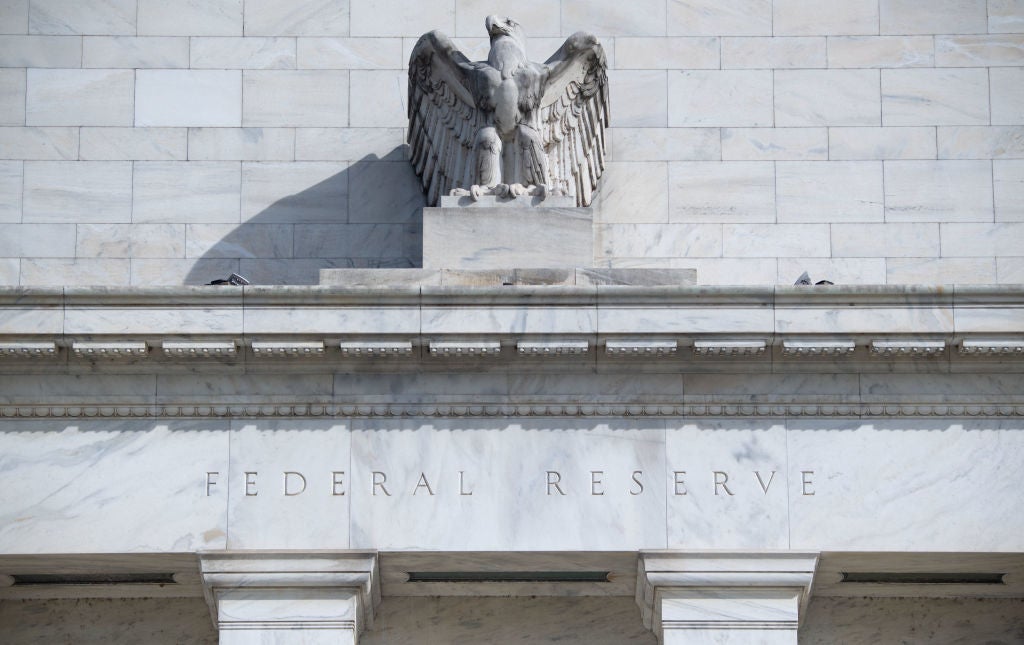
In a widely anticipated move, the US Federal Reserve and the Bank of England have both raised their interest rates by 0.25 percentage points.
The move aims to reduce inflation levels, which have reached a 40-year high in the US at 7.9% and a 30-year high in the UK at 5.5%.

Discover B2B Marketing That Performs
Combine business intelligence and editorial excellence to reach engaged professionals across 36 leading media platforms.
The war that Russia is waging against Ukraine was indicated as a primary concern by both banks, as energy and food prices have already been impacted and are expected to continue to increase over the coming months.
For the Federal Reserve, the decision marks a significant change of pace as the bank had kept interest rates at their lowest levels since the financial crisis in 2008, had not raised them since 2018 and had slashed them again in March 2020 in response to the Covid-19 outbreak.
Federal Reserve chairman Jerome Powell said in a press conference that more hikes are expected throughout 2022. Powell also said that the US economy is well positioned to handle the increase and that the labour market is strong. The possibility of a recession in the next year “is not particularly elevated”, he told the press.
The following day, the Bank of England announced a 0.25 percentage point interest rate increase from 0.5% to 0.75%. This is the third hike in four months in the UK. Both banks have a 2% inflation target.

US Tariffs are shifting - will you react or anticipate?
Don’t let policy changes catch you off guard. Stay proactive with real-time data and expert analysis.
By GlobalDataFrom a foreign direct investment (FDI) perspective, data suggests that inflation boosts inflows to emerging economies but dampens investor appetite elsewhere.
Rising levels of inflation can have multifold consequences for FDI in the different regions.
Investor worries on interest rate action
The Federal Reserve’s announcement, in particular, pushed investors to change their outlook on the institution and left some worried that it is downplaying the impact of the war in Ukraine on the US economy.
“We have changed our outlook to expect back-to-back hikes through September and forecast the Federal Funds Rate at 1.50–1.75% by end-2022,” said David Page, head of macroeconomic research at AXA Investment Managers.
“The uncertainty for us remains the impact of the Russian invasion,” he adds. “The Fed’s median estimate dot plot has increased to 2.8% from 1.6% – in keeping with our outlook of 2.75% by end-2023. However, we are wary that the Fed is underestimating the impact of the invasion on the US outlook – with little change beyond near-term adjustments.”
Giles Coghlan, chief analyst at mining company HYMC, expresses similar concerns. “Has the Fed been hawkish enough?” he wonders in a note.
“Right now, the central bank has a lot on its plate – it must balance the inflation narrative alongside the risk of sending the US economy into a recession. Going forward, any further hiking action will come with caveats – we may see a more dovish approach to tightening, rather than the aggressive approach we have been primed for over the past year. But today, we traders and investors could see a ‘buy the rumour, sell the fact’ response to the announcement, which would favour upside in stocks, gains for gold and silver, as well as a euro-US dollar upside and a drop in US ten-year yields.”
Susannah Streeter, senior investment and market analyst at financial services company Hargreaves Lansdown, has a similar opinion about the decision by the Bank of England to only raise rates by 0.25 percentage points.
“[…] this limited move means inflation will slip away and slide upwards again. The commodity chaos unleashed by the conflict in Ukraine is set to feed through to consumer prices, and unwelcome energy bills are already poised to land on mats in April,” she warns.
“The central bank grip is highly likely to intensify in the months to come, with higher borrowing costs set to tighten the uncomfortable cost-of-living belt by a few more notches – but there is still plenty of uncertainty around the table about the path of those rate rises. Similarly, there is still worry among investors about the unfolding events in Ukraine and how the tense situation will affect the economy and monetary policy in the UK,” she concludes.
Understand the impact of the Ukraine conflict from a cross-sector perspective with the Global Data Executive Briefing: Ukraine Conflict.





